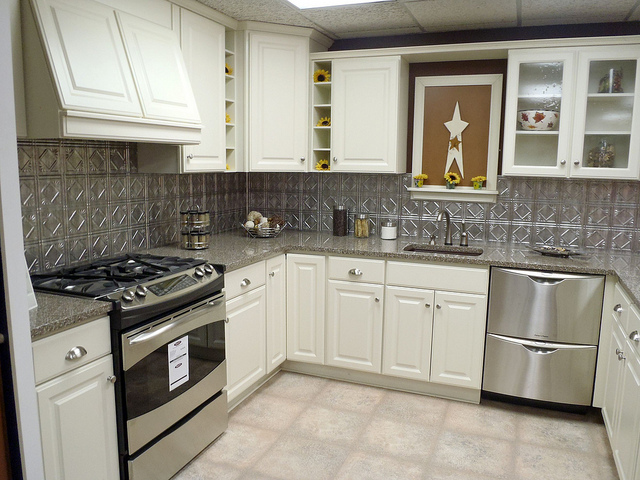If you’re looking to remodel your kitchen and upgrade your stove, selecting a range isn't an easy task. Ranges come in a multitude of different varieties, including: electric and/or gas, Freestanding and Slide-In selections. Available in your standard white, black and stainless steel finishes, there are many design attributes you should consider to optimize your kitchen space and cooking experience. Naturally, every decision in life comes along with benefits and drawbacks…selecting a range is no exception! Pricing is an important factor when it comes to purchasing a new unit, especially when you're working within a budget for your entire kitchen renovation. Understanding the different types of ranges can help you focus in on your budget along with the best functionality designed for your lifestyle. Decide if You Should Go with a Gas or Electric Range Many people choose gas ranges over electric even though electric ranges are less expensive to purchase upfront. Gas Ranges:
- Pro: Provide even stove-top heat
- Pro: Less expensive to operate than electric ranges
- Con: More expensive to purchase and install
- Con: Present the danger of gas leaks and fire
Electric Ranges:
- Pro: Flat versions save you maintenance and cleaning time
- Pro: Provide more even oven-baking heat
- Con: Burners are slower to cool
- Con: Vulnerable to power outages and high voltage storms
For a seasoned cook, a gas range is the way to go, but for the efficiency required in a fast-paced lifestyle, the electric range certainly is the option. Determine if you want a Drop-In/Slide-In Range or a Freestanding Range Slide-In ranges (also known as Drop-In ranges) are built to be level with your kitchen countertop. Freestanding ranges, not to sound obvious, are simply that—freestanding and independent. Both types of these ranges come in either electric or gas types. Freestanding Ranges:
- Have side panels, making it easier to place in-between cabinets or by itself
- Have a backguard, but results in reaching over the range to make any adjustments during cooking
- Back splashes are more difficult to showcase with the backguard
- Food and crumbs can fall down the sides of the range
- Less expensive to purchase
Slide-In ranges
- Have unfinished sides and need exact countertop measurements
- Have a “built-in” look and makes cleaning easier since the range overlaps the countertops
- Do not have a rear console (which makes these ranges certainly more convenient)
- All of the controls are at the front end of the cooking area; you'll never have to reach over your sizzling cookware to alter the adjustments
- More expensive to purchase
Which design is best-suited and practical for you and your kitchen? White is the traditional color for ranges, but black and particularly stainless steel appliances are frequently used and bought by modern homeowners. Ranges vary widely in cost, from a few hundred dollars to thousands. They're able to have selection of additional features to satisfy your unique needs. Depending on your kitchen’s style, your decision boils down to the look and practicality for your kitchen area within your budget.
Photo by: williamskitchenbath | Flickr





